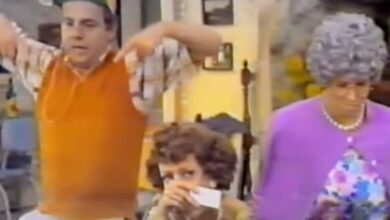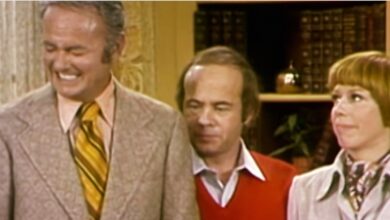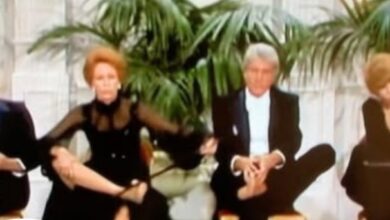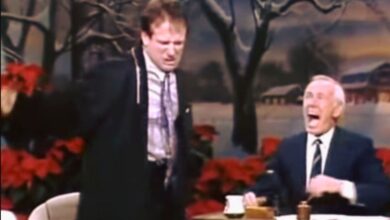Disturbed’s Emotional Conan Performance Turns “The Sound of Silence” Into a Once-in-a-Lifetime Masterpiece
In March 2016, Disturbed took an unexpected artistic turn that surprised many who had followed their career built on powerful riffs and aggressive vocals. On March 28, 2016, they stepped onto the stage of Late Night with Conan O’Brien and tackled a rendition of Simon & Garfunkel’s “The Sound of Silence.” The moment carried a deep emotional presence that contrasted starkly with the band’s usual intensity. Fans and casual viewers alike witnessed the group revealing a level of vulnerability that added a brand-new dimension to their identity, signaling a shift in how they could convey raw feeling without relying solely on volume or speed.
Inside the studio that evening, there was an air of curiosity and anticipation. Audience members who expected explosive energy were instead drawn into a performance delivered with near-reverent quiet. Draiman’s unique vocal delivery created a dramatic tension that filled the room without needing to overwhelm it. The hush that settled across the stage added gravity to every rising note, making listeners feel like they were experiencing something intimate and entirely unplanned. It was the kind of silence that demands attention instead of suggesting emptiness.
The impact of that performance extended beyond the studio itself. Paul Simon, the original songwriter, saw the live version shortly afterward. Deeply touched by the sincerity and respect in the interpretation, Simon personally emailed vocalist David Draiman on April 1, 2016. He expressed appreciation for the emotional power the band managed to unlock within his composition. That message served as a rare nod of approval from a legendary artist, cementing the moment as not only bold but historically significant in the broader landscape of cover performances.
Draiman responded publicly with genuine humility, explaining how honored he felt that Simon recognized their effort to handle the song with care and truth. He described their interpretation as an attempt to bring a new emotional angle to a timeless classic without overshadowing its legacy. This renewed cultural exchange between generations of musicians elevated the song from a simple reinterpretation into a respectful collaboration across time. It demonstrated that artistic impact can travel decades and still find fresh resonance in entirely different musical worlds.
Before the Conan performance had even taken place, the studio release of the song helped Disturbed’s sixth studio album, Immortalized, reach unexpected heights. The track became the band’s highest-charting song on the Billboard Hot 100 at number 42 and dominated both the Mainstream Rock and Hard Rock Digital Songs charts. Its success showed that the group’s audience was far more open-minded than critics often assumed, welcoming a version of Disturbed that dared to be cinematic, gentle, and unguarded.
The arrangement recorded for the album stood apart from their signature metal approach. Guitarist Dan Donegan layered guitars, piano, bass, and EBow, while drummer Mike Wengren added timpani for dramatic dynamic pacing. The orchestral weight supporting Draiman’s expressive vocals allowed each phrase to carry emotional depth, something that could not be achieved through distortion alone. The restraint became the power, proving the band did not need to shout in order to be heard.
Reactions that followed the Conan performance were overwhelmingly positive, with many calling it one of the most gripping late-night musical guests ever broadcast. The balance of elegance and darkness struck a chord with viewers who did not typically identify as metal fans. Even skeptics conceded that the version demanded respect for its atmospheric power. Art that pushes boundaries often divides opinions, but that division proved the performance was impossible to ignore and undeniably impactful.
The commercial success surrounding the cover reflected just how deeply it connected with people. By late 2017, the track had sold more than one and a half million digital downloads and accumulated vast streaming numbers across platforms worldwide. The official music video soared past the billion-view milestone, while clips of the Conan performance alone gathered well over 150 million views. The song quickly became one of the most recognizable rock reinterpretations of the decade, embedding itself into popular culture far beyond genre labels.
Disturbed’s return from hiatus in 2015 was already marked by strong interest, but “The Sound of Silence” pushed the band into an entirely different spotlight. Immortalized debuted at number one on the Billboard 200, signaling fans were ready to follow them into new emotional territory. That particular cover acted like a statement to the music world: Disturbed was not limited to heavy distortion or rage-driven anthems. They were capable of shaping beauty, elegance, and fragility into an unforgettable performance.
The production behind the recording underscored this creative leap. Under the guidance of producer Kevin Churko, the band paired rock instincts with grand orchestration to transform the piece into something operatic in scale. Instead of relying on familiar metal textures, they allowed quiet moments to grow monumental through arrangement rather than aggression. That level of musical maturity pushed their artistry into a space where critics and award voters began to take renewed interest.
Industry recognition soon followed, proving the performance was more than a viral surprise. The band earned a Grammy nomination for Best Rock Performance in 2017, a rare achievement for a cover song. The nomination validated what audiences already felt: Disturbed had tapped into the spiritual core of a classic without displacing its soul. The blend of homage and reinvention brought new life to one of the most cherished pieces of folk-rock history.
Imagine being in the studio that night, expecting roaring amplifiers and instead witnessing a performance that felt almost like a prayer. The surprise, the silence, the swelling emotion—all of it combined to create a realization among the audience that something extraordinary was unfolding right before them. It was a once-in-a-lifetime moment where attendees knew they would be describing it for years, recognizing the privilege of experiencing a historic shift firsthand.
That single performance expanded the definition of what Disturbed could be. It continues to echo with listeners who find themselves unexpectedly moved by music they never thought would touch them. Cover songs rarely eclipse expectations, but this one managed to exist alongside the original with its own authority and elegance. The Conan appearance was not merely a performance—it was a revelation that art can transcend genre, era, and assumption, leaving behind a lasting emotional truth that audiences carry with them long after the final note fades.





